After reading about the town of Sa Pa on the internet and seeing some pictures of it’s landscape, we were convinced we needed to visit the small town in northwest Vietnam. We booked a night train from Hanoi to Lao Cai and made our way from there to Sa Pa by minibus (at 5 a.m.!!)
Sa Pa is a small town of about 10,000 people situated in the Hoang Lien Son mountains of Northwestern Vietnam at an elevation of about 5,000 feet. The area is home to several of Vietnam’s minority ethnic groups, with the Black Hmong, Red Dao, and Tay peoples the most prominent in this area. Vietnamese is spoken as a second language by nearly everyone in Sa Pa, making it unique from the other places in Vietnam we visited. When we arrived, we were treated to a city surrounded in dense fog and 45 degree weather. A big difference from the 70-80 degree weather we had been used to in the rest of Vietnam! We headed straight to a small trekking company named Sapa O’Chau to do what we came here for; trek out into the small villages around Sa Pa for a few days and experience this beautiful landscape up close.
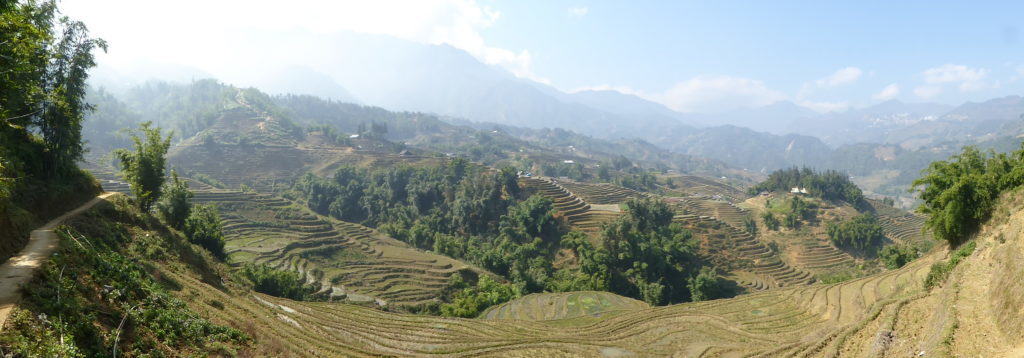
Our guide for the 3 day, 2 night trek was a lovely woman named Chi. She is from the Black Hmong minority group and grew up in the village of Lao Chai in a family of rice farmers (like most people of Sa Pa). She told us how she didn’t like farming, so began to learn English from the tourists that would come to Sa Pa. We’re glad she became a trekking guide because she was an absolute joy to be around. She told us about her family, rice farming, the local Hmong customs, the landscape around Sa Pa, and answered all of our questions with a happy smile. She was also susceptible to our lighthearted jokes and her giggle would get us all cracking up even more. However, it wasn’t just the company of Chi that made our trek great, we were also joined by 3 others that were wonderful companions as well.
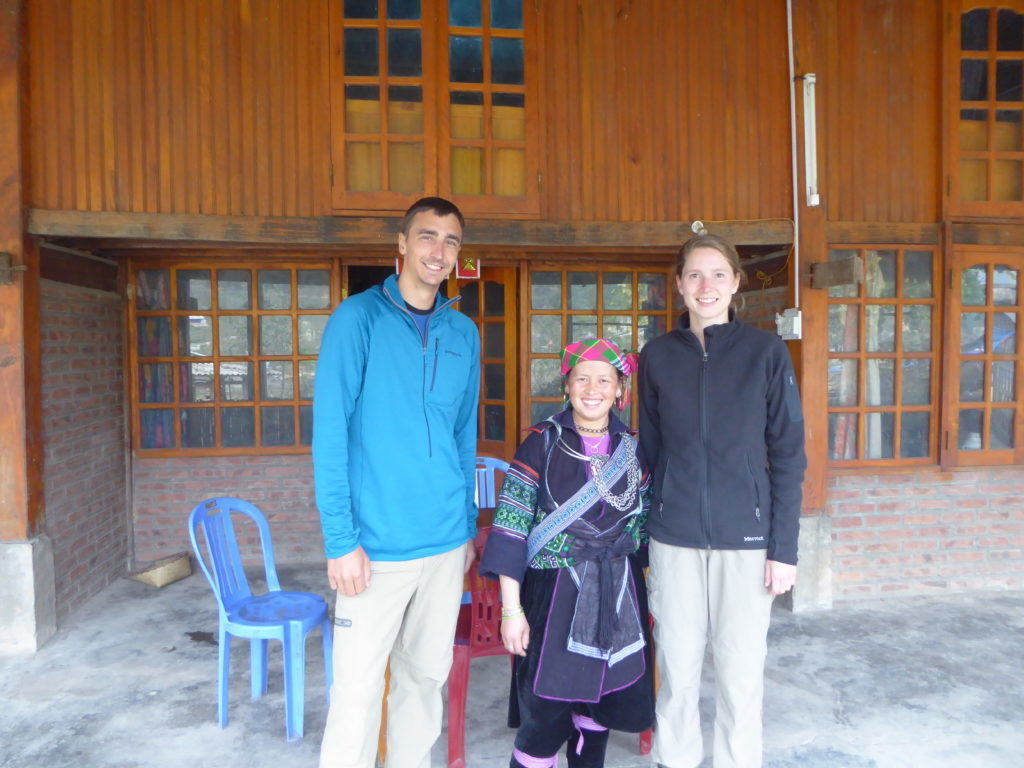
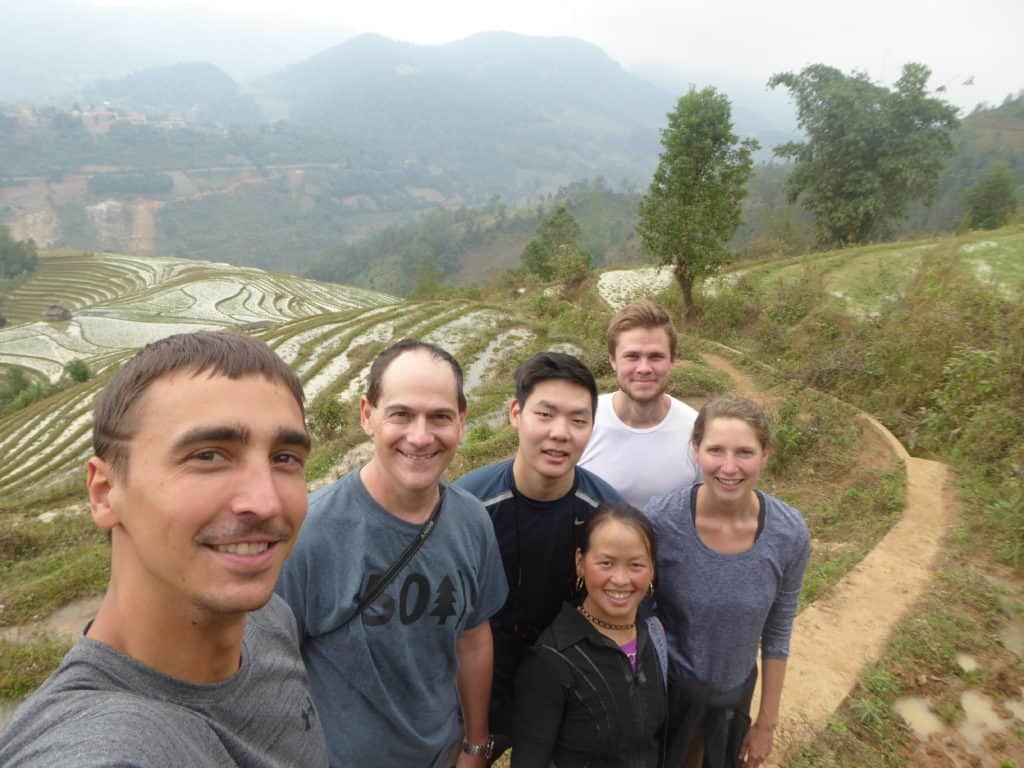
We started out our trek the first morning by heading to the small village of Cat Cat to see a small waterfall. The village is quite small, but is situated in very picturesque setting.
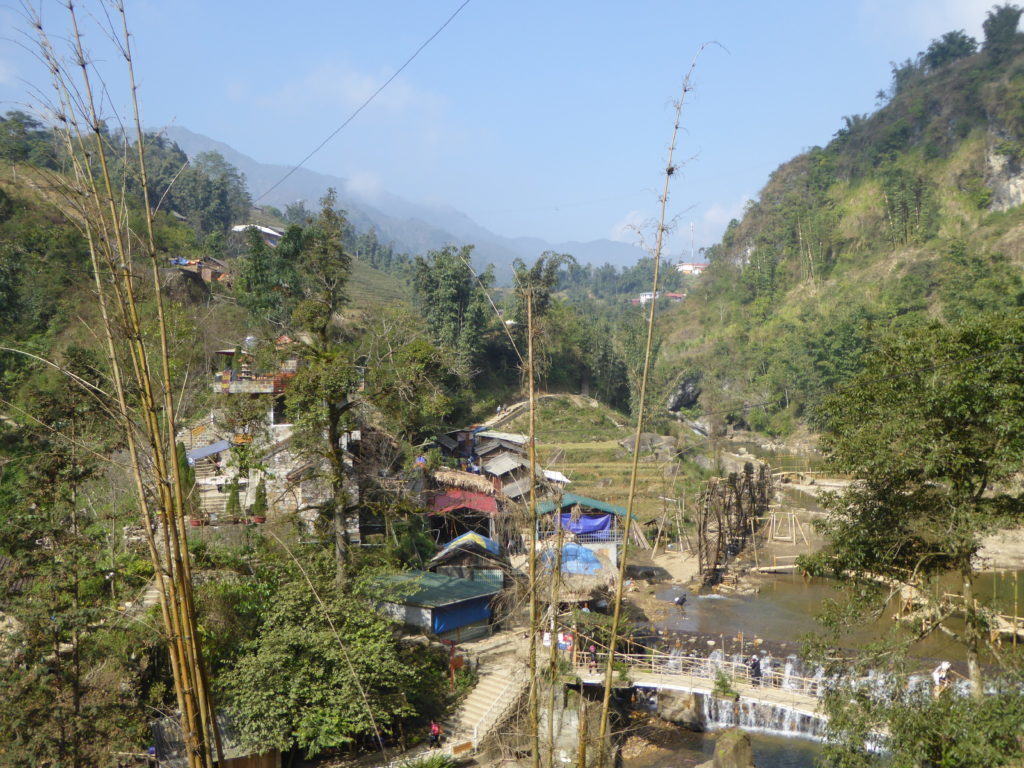

After leaving Cat Cat, we meandered our way past other small villages, clambered up steep dirt trails while dodging the occasional intrepid mountaineering moped, crossed through terraced rice paddies, followed spring fed streams as they cut through the landscape back towards the river valley until we finally ended up at Chi’s homestay in Lau Chai village, roughly 15 kilometers from where we started earlier in the day. The views along the way were absolutely stunning. One cannot help but be amazed at the human ingenuity of the terraces that have been cut into this beautiful mountain valley. These rice terraces of Sa Pa have been cultivated for over a thousand years and make this landscape one the most unique we’ve ever witnessed.
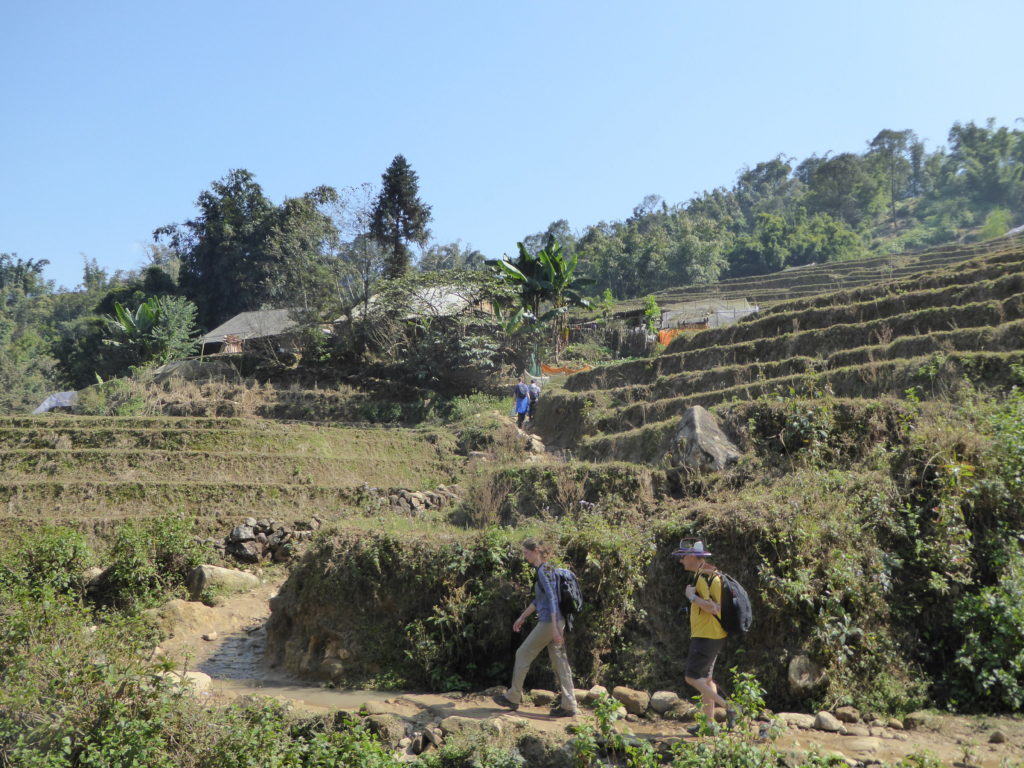
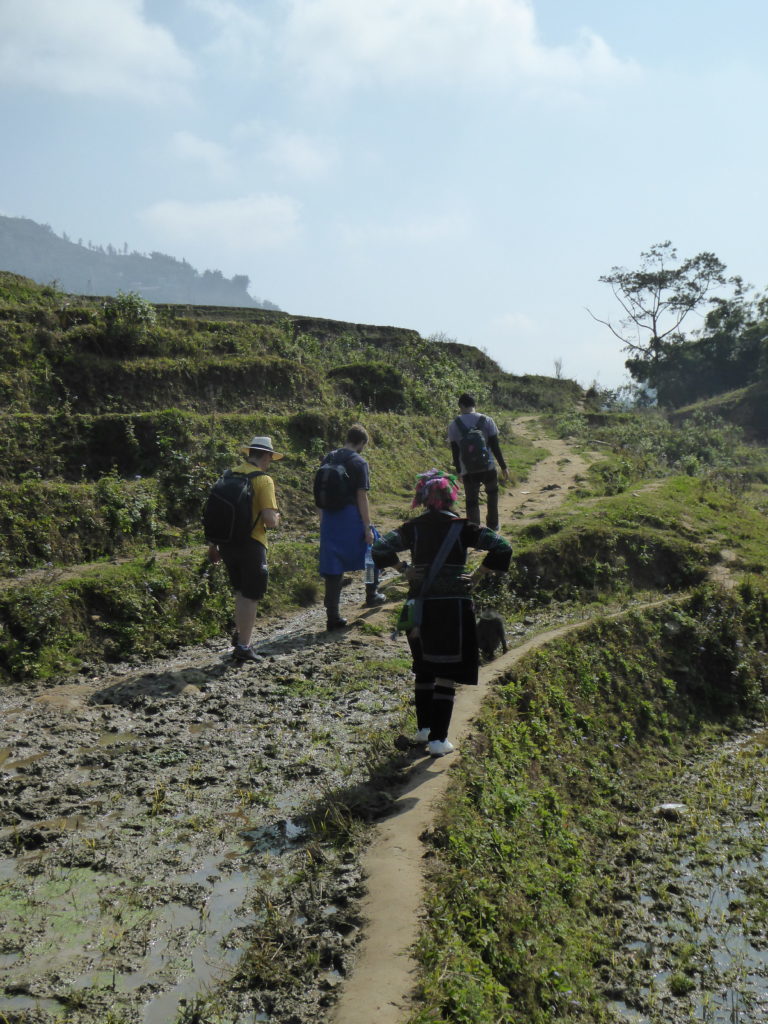
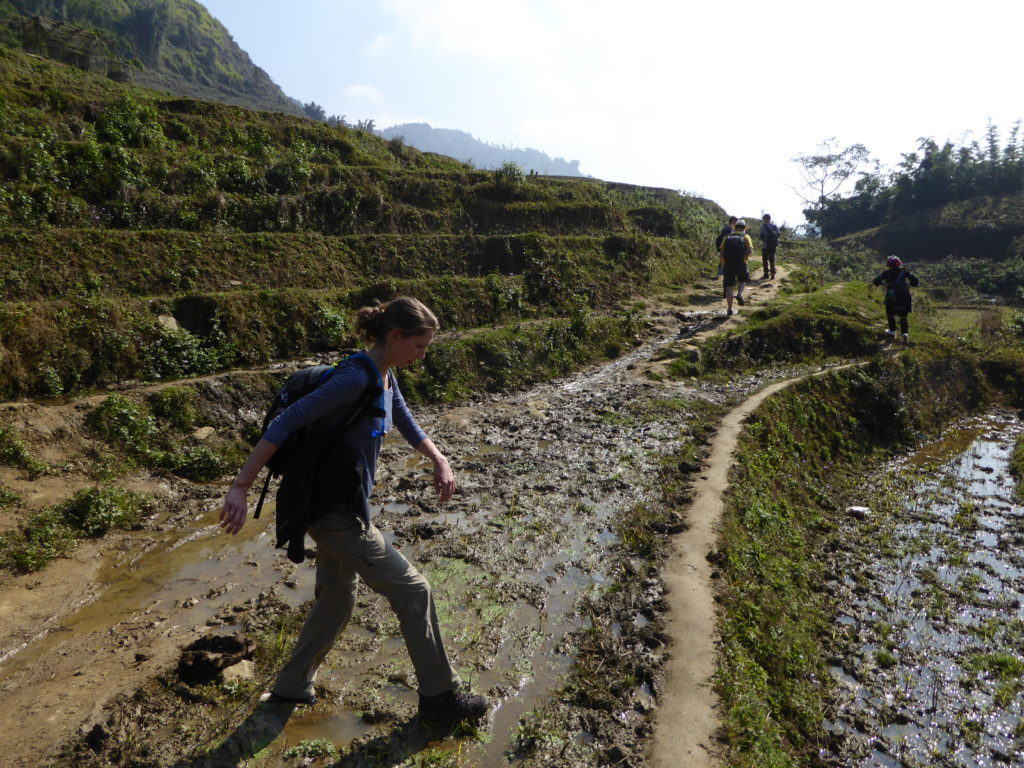
After we had reached Chi’s homestay in Lau Chai village we took off our boots and rested our legs. We had been climbing up and down all day and were happy to be able to sit down for a while. Chi started cutting up some fresh sugarcane for a snack, so we all indulged while taking in the quiet sounds of her village.
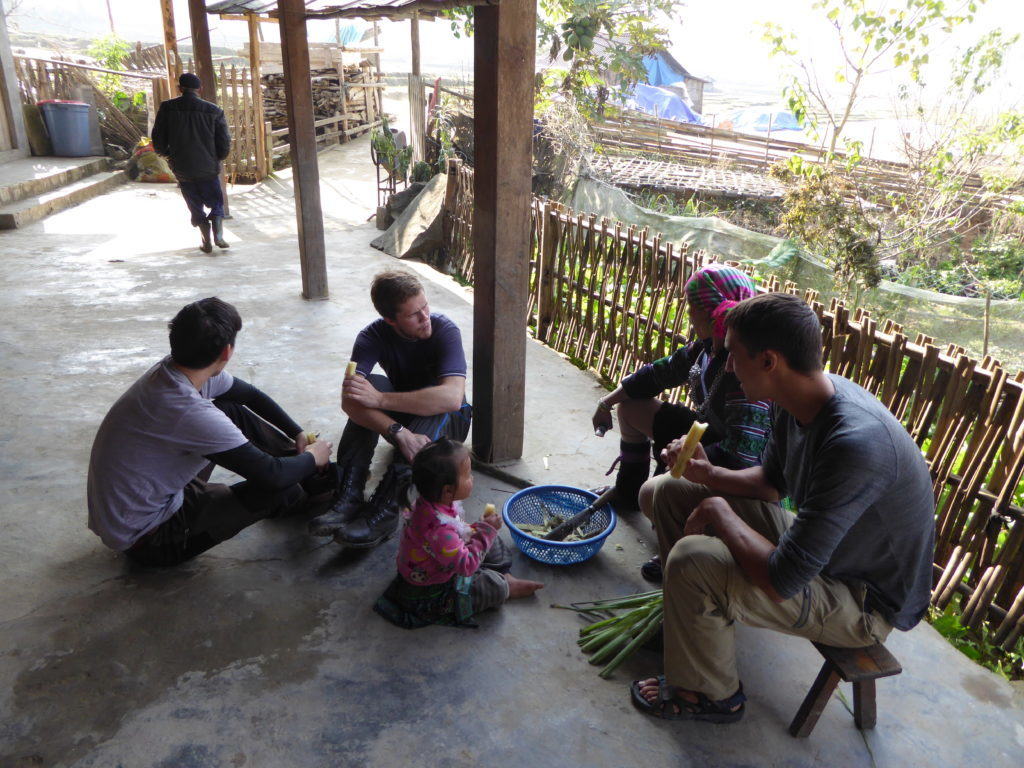
After the sugarcane snack, Chi began working on dinner for the group. Her and her husband prepared a whole table full of wonderful local dishes. I don’t remember the names of everything, but we had dishes of chicken, pork, rice, soups, spring rolls and other delicious things.

Chi also encouraged us all to drink some “happy water” after the meal. This is the term used for their home brewed rice wine. It isn’t necessarily very good (tastes like what gasoline smells like), but it makes for great entertainment and conversation. Chi kept insisting that we have another shot of the happy water, saying that it would be the “last one”. I think we each had about 10 shots, all of which were the “last one”! We ended the night by hanging out around the coals of a fire in the living room on the bottom floor with Chi’s grandparents.
The next morning we woke up ready for another day of trekking. As we began walking, Chi told us that there was a funeral for one of her neighbors happening close by. In Hmong tradition, funerals last for 3 days, Chi said that that the funeral was currently in it’s second day. She asked if we would like to go to the funeral. We were wary of this, because we didn’t want to intrude on something so personal, especially in a culture we were so unfamiliar with. However, Chi assured us that it would be ok for us to go. We headed to the funeral, which was being held outside on some of the rice terraces owned by the deceased man. We stopped at a distance, but Chi kept telling us that we could go closer. We followed her all the way to where the people were gathered. Chi explained that the family had killed a buffalo that morning and were cooking the meat for a feast. People were milling about, and some older men were playing some traditional instruments. I always hesitate to take my camera out at times like this because I feel it is inappropriate and disrespectful. I therefore just stood and watched the activities from a distance. However, after just a few minutes, several of the Hmong approached and beckoned us to join them. One of them came up to me with a water bottle in one hand and a small tea cup in the other. I knew what was in the water bottle from my experience the night before; locally distilled Hmong rice wine. Chi explained that the man had chosen me to drink with him. He poured himself a shot, drank it, and then gave me the cup and bottle of rice wine. Chi told me I had to go into the funeral and choose someone to then drink with me. My first thought was “what?, you want me to walk into a funeral full of people I don’t know and ask one of them to drink with me? Are you crazy?” However, she insisted that this was the tradition so I needed to do it. I was also being helped along by the man that first drank with me. He spoke no english, but he gently took me by the arm and escorted me towards the center of the funeral.
I approached an older woman who was chatting with another lady. I held up the bottle of rice wine and gestured to her. She looked at me and a big smile came across her face as she began to laugh. She shook her head no while smiling and laughing, but her friend started giving her a hard time. Both women continued to smile and laugh as I poured the first one a shot. I handed it to her and she immediately drank it. All three of us then smiled and laughed together. The older woman who took the shot then had me drink another one. Afterwards she took me by the hand and picked out another guest at the funeral to share a drink with. In the end, I had drank 5 shots of rice wine with random different guests at the funeral. It was approximately 10 a.m.
After this warm introduction into Hmong tradition, I no longer felt uneasy about taking a few pictures. I felt as if I had been initiated in a way. It was clear that those attending the funeral were not taken aback by the appearance of a few westerners, rather they were happy to share in the celebration of the life of the deceased. It was also a very real and raw experience. This was not something other tourists saw. Two men were playing traditional instruments by the coffin while several women sat next to it in somber silence. A few men were busy cooking up the buffalo that had been butchered and paid no attention to us. We were never once asked where we were from, nor were we asked to pay for any of the drinks. We simply became a part of the celebration for the man who died. It was an experience I won’t soon forget.
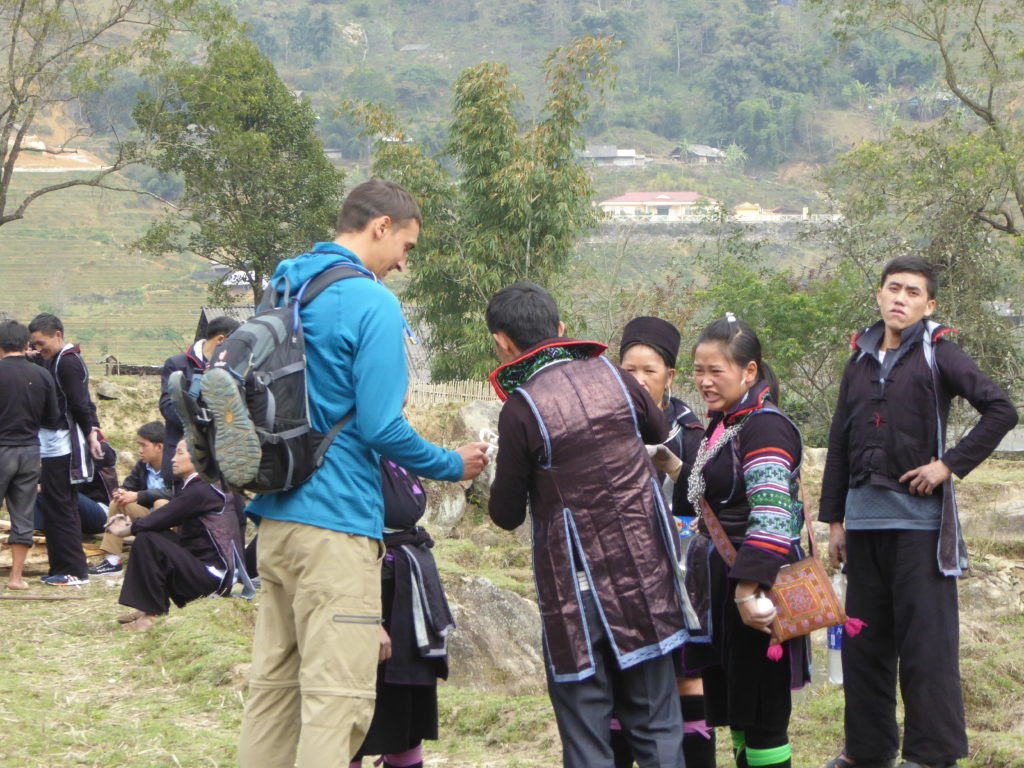
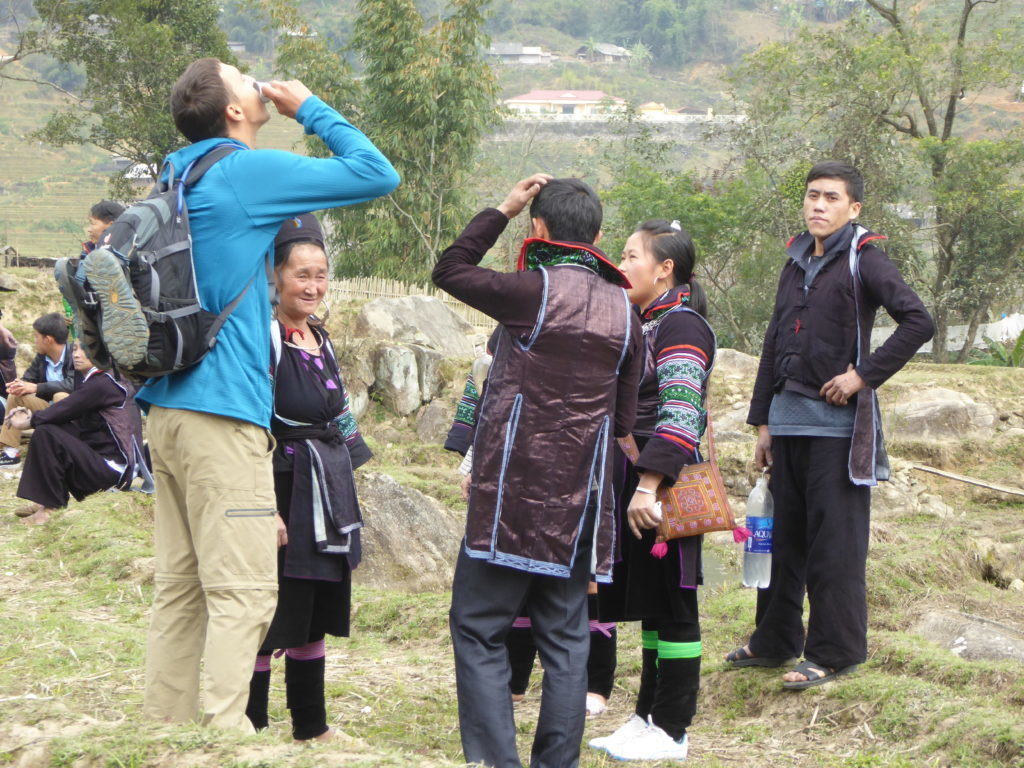
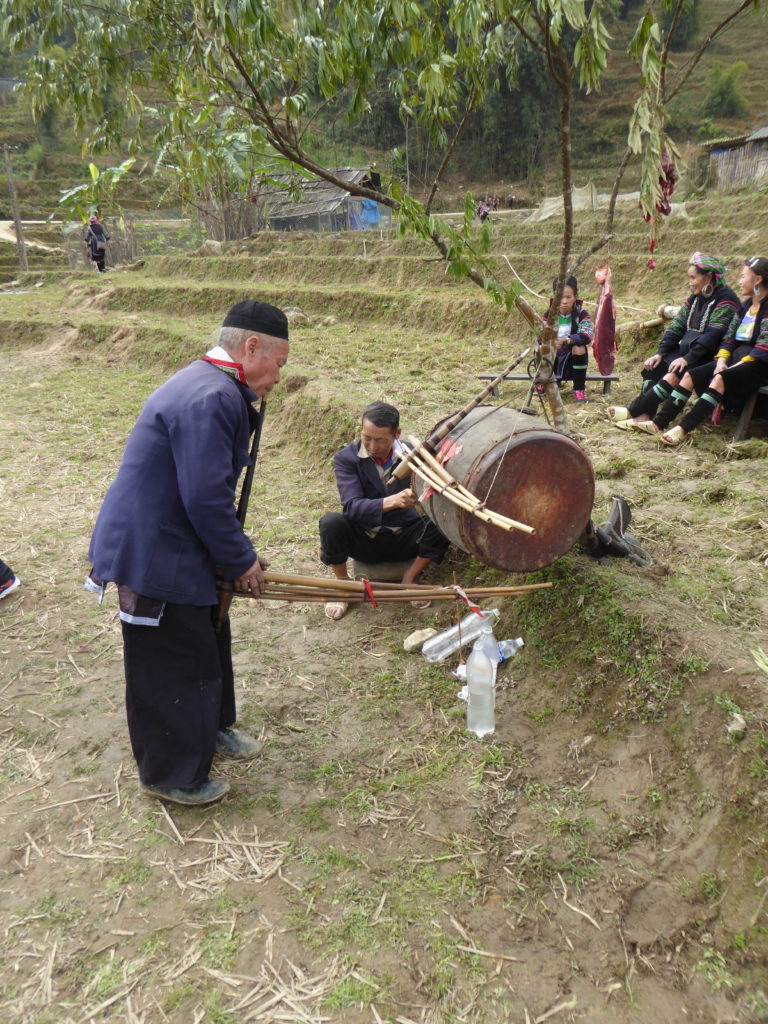
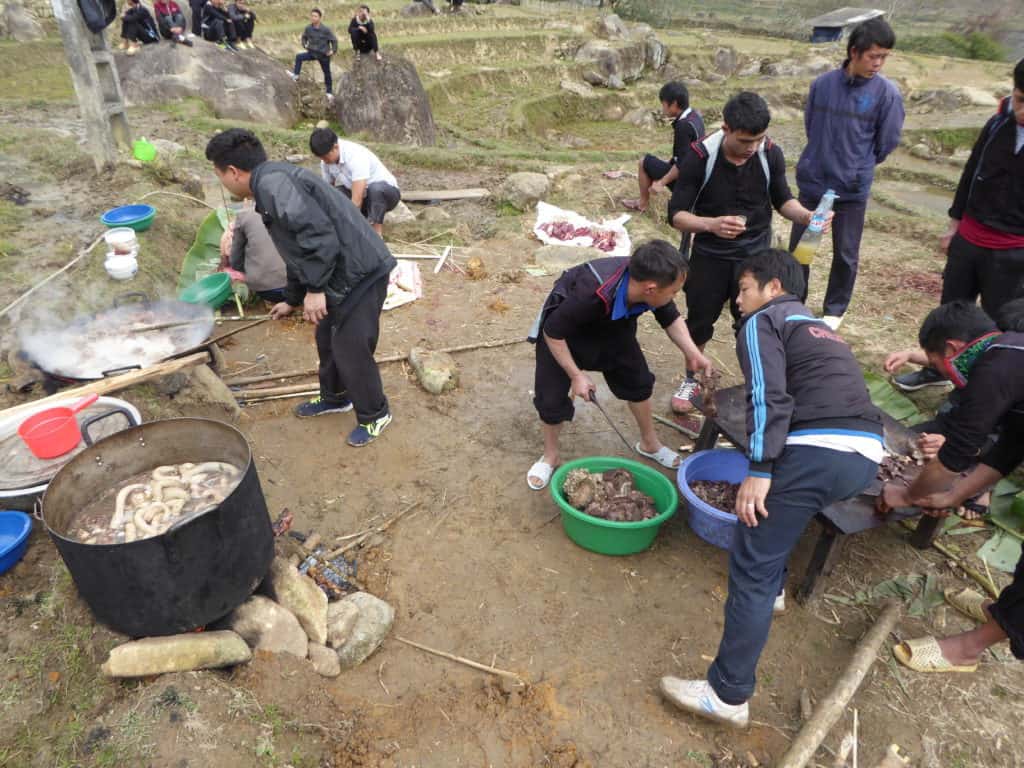
After leaving the Hmong funeral, we continued trekking the along the beautiful landscape of the mountain valleys. The second day was similar to the first, except that it was a bit more hazy. I can’t complain too much though because the views were still amazing. At the end of the day, we stopped at another small waterfall. We relaxed there for a bit and then headed to the homestay of a local Tay family for the 2nd night. We were again served a wonderful meal and spent the evening chatting before heading to bed.
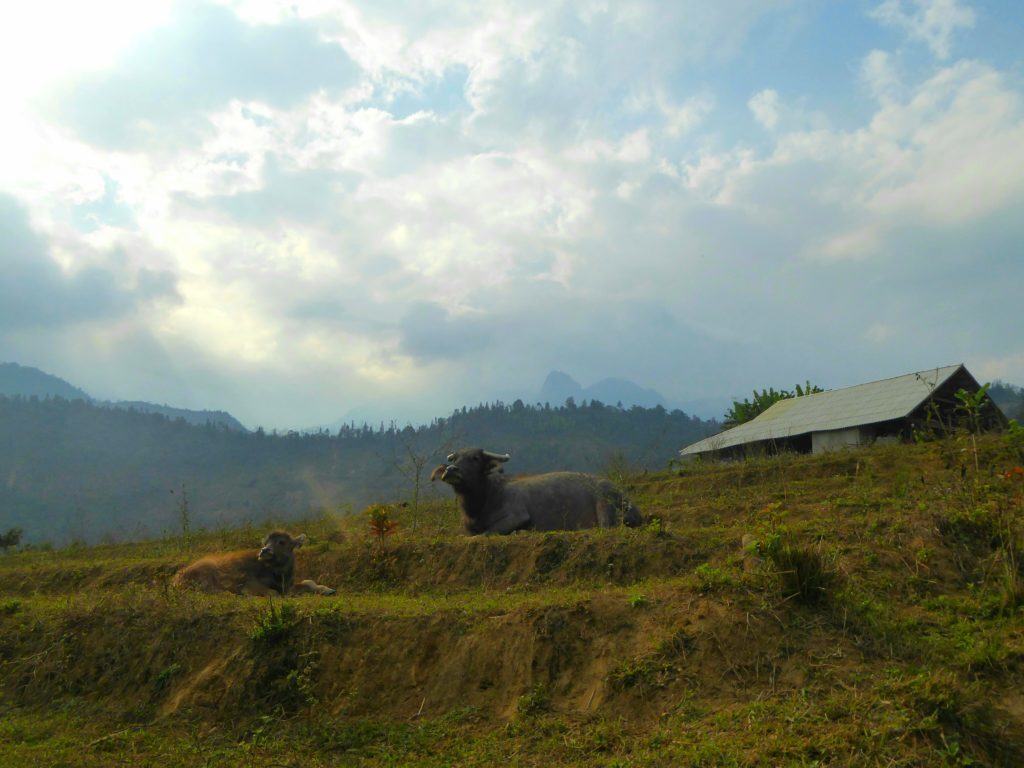
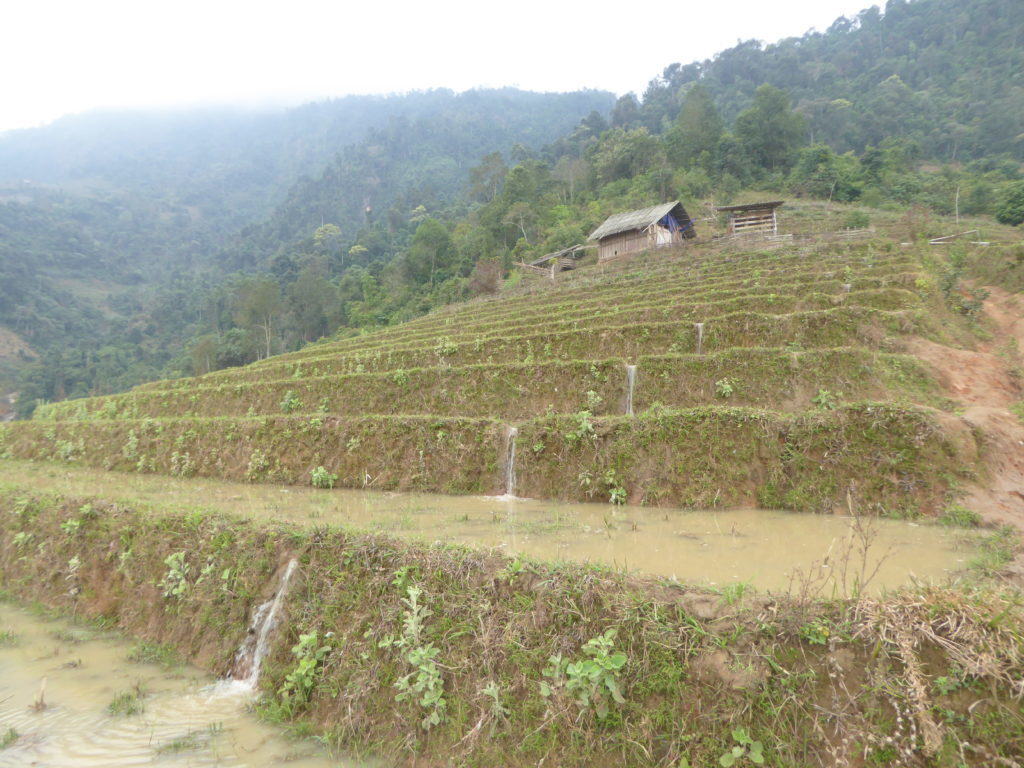
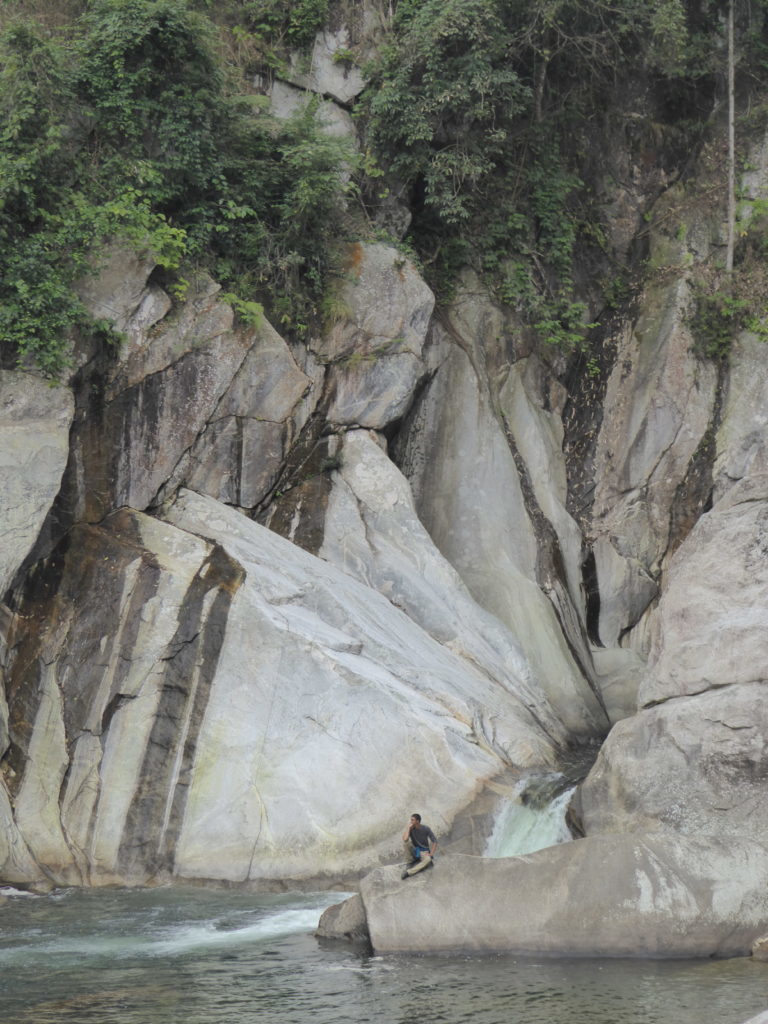
Overall, the three days and two nights we spent trekking in Sa Pa, Vietnam were some of the most memorable of our trip so far (if not the most memorable). It will be impossible to forget the hospitality that was shown to us by the Hmong people as well as the limitless beauty of the landscape around Sa Pa.

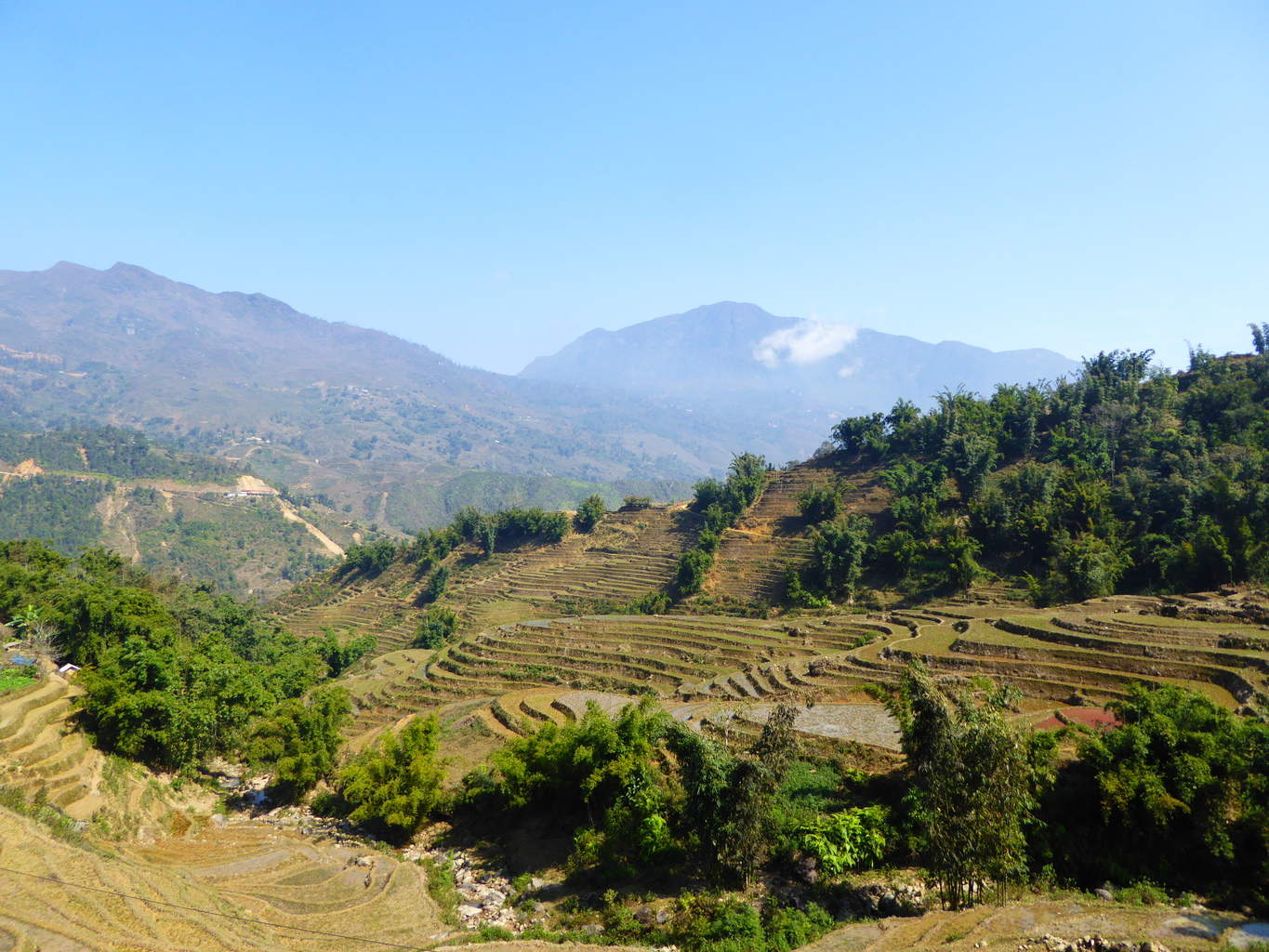
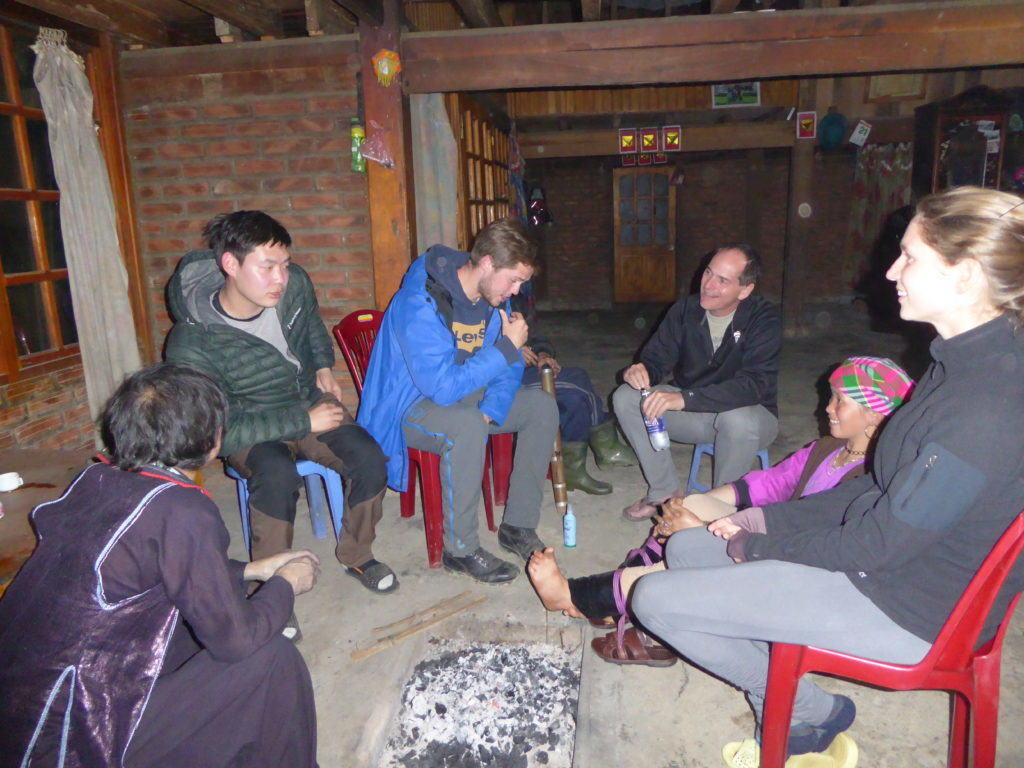
Comments
5 CommentsDani
Feb 3, 2017So cool that you guys got to attend a funeral! I’ve always thought that funerals reflect a country’s culture and attitudes. The cultural differences are definitely striking!
Kathy Kieser
Feb 13, 2017Totally agree! It’s so interesting to see how different cultures deal with death. Celebrating someone’s life after they passed seems like a great way to remember and honor them. And I am sure people don’t mind celebrating it with plenty of rice wine and buffalo meat 🙂
Laura Kieser
Feb 3, 2017What a unique experience! And gorgeous scenery! You both are really adding up the adventures!
Karen
Feb 9, 2017What a welcoming attitude – such an extraordinary display of humanity. And a challenge for the rest of us to act likewise! I’m sure those women got a kick out of showing you how to properly drink Hmong rice wine 😉
Phil
Feb 26, 2017🙂 Yep, I still smile when I think about drinking rice wine with those older ladies!